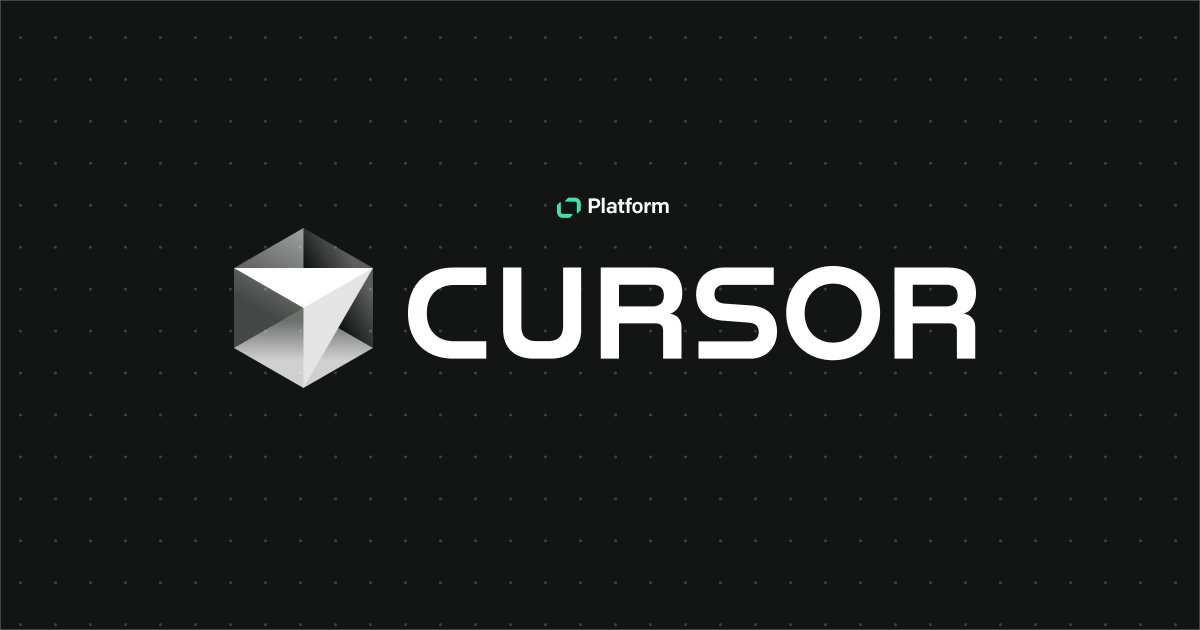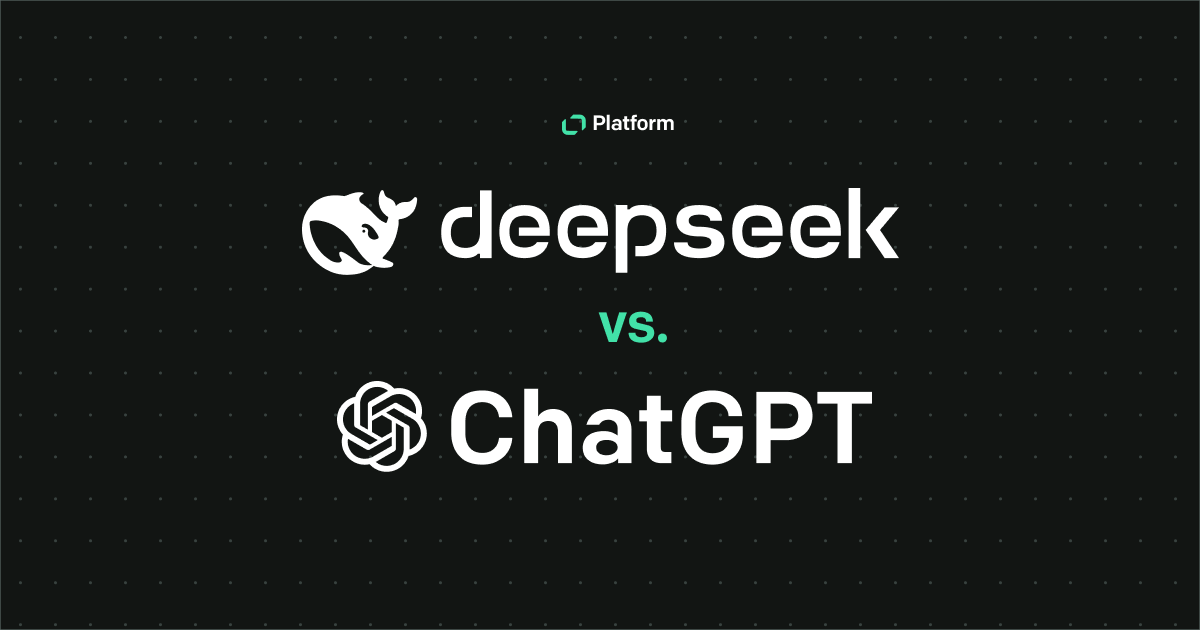What you’ll learn from this article:
- What GitHub is and how it works
- What version control systems are and why they matter
- How Git builds the foundation of GitHub
- What's the difference between Git and GitHub
- Key GitHub features
tl;dr
GitHub is a platform for hosting, managing, and collaborating on code projects using version control during all development stages.
So… what is GitHub used for?
GitHub is primarily used for managing code and working with teams through a system called version control. Version control lets developers keep a history of every change made to a project. This means you can easily go back to previous versions, see who changed what, and work on new features without overwriting each other’s work.
Key findings
What makes GitHub different from Git?
Git is the underlying technology — GitHub builds on it with a user-friendly interface, collaboration tools, and cloud hosting. It simplifies Git’s complexity.
Is GitHub just for teams?
Not at all. It’s just as useful for solo developers who want to track their code, back it up, or showcase it in a public portfolio. It’s where code lives and evolves — whether you’re one person or 100.
There’s more to GitHub than a few sentences can cover — continue reading to see how we break down exactly how it works.
Whether you’re a novice or an experienced coder, you’ve likely heard of GitHub, a cloud-based developer platform used by everyone from single developers to massive tech giants such as Google, Facebook, and Amazon.
If you just got started on our Text Developer Platform program, you might’ve wondered what is GitHub used for or if you should host your code on it. Even though our program lets you create and monetize apps with zero programming knowledge, it also lets you include custom code written in external APIs. You might want to host that external code on GitHub, especially if it’s open-source.
In this article, we’re going to dive into what exactly GitHub is, its features, and how it works.
Let’s get started!
Introduction to GitHub
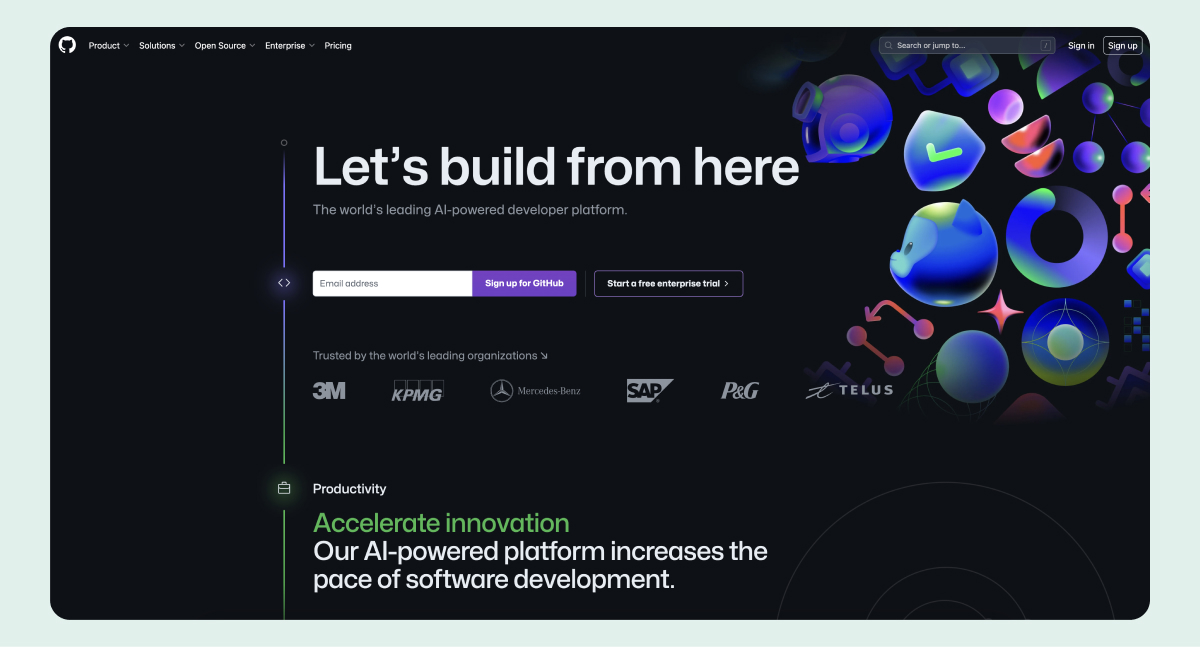
GitHub is a code-hosting website service that allows programmers to collaborate on the same code base, regardless of where those programmers are located. The vast majority of GitHub projects are open-source projects. However, not all the code on GitHub matches that definition — it’s also possible to create private repositories on GitHub.
As of January 2023, GitHub had reached 100 million users, and it’s still growing. The site is so popular for open-source development that one might even consider it a social networking site for developers.
To understand the internals of GitHub more closely, we must first understand the “git” version control system (VCS).
What are version control systems?
When multiple coders work on the same project, it’s important that they don’t overwrite each other’s work. The possibility of overwriting grows even higher when a software development team gets bigger.
Bell Labs introduced the world’s first version control system (VCS) in 1972. This system followed a file-centric approach, which continued until 1982. After that, version control systems followed a client-server approach, which opened the door to project collaboration. Finally, the third generation was introduced in 2003 — a distributed version control system, which is the only system suited to massive-scale, internet-based, worldwide collaborative projects.
What is the Git version control system?
Git — a distributed version control system — is the most widely used VCS in the world.
Git tracks all file changes so developers can easily revert any conflicting code to a previous version using version control.
The word "git" itself is meaningless. Linus Torvalds, the creator of Linux, gave the tool this name, describing it as "the stupid content tracker."
On a command line, you can write the "git" keyword followed by specific commands—such as "commit," "fetch," "config," and others—and leverage the Git VCS to enable distributed version control on your project.
GitHub is built on top of Git
GitHub is a cloud-based service and web-based interface built on top of Git. It allows developers to store their source code in the cloud integrated with the Git version control system to manage that code and maintain quality control.
GitHub adds other features, such as a collaborative interface, to help the open-source community come together in a central place to work on projects. It makes project management easier and is the ideal solution for development teams creating open-source software.
Because Git is open-source software, you could technically host it on your own server. However, creating a free GitHub account to manage your source code is much easier. GitHub, owned by Microsoft, takes care of all the security features and server maintenance required to maintain a global community of developers.
Differences between GitHub and Git
GitHub is a service, while Git is software. GitHub offers features such as a web-based graphical interface and collaborative interfaces. It allows you to build web pages associated with a project and provides other tools that make project management for development projects easier.
It's more challenging to learn Git on its own than to learn GitHub because Git, in its purity, uses a command line interface to interact with a repository. In many cases, you'll also need to use the Git command line tool when cloning GitHub repositories onto your local machine. However, it's easier to grasp what's happening when you also have the web interface to refer to. You can also use a convenient GitHub desktop application.
You don't need to use the command line tool if you use Visual Studio Code or GitHub's online code editor.
Key features and concepts of GitHub
Let's look at the key features and concepts of GitHub.
GitHub repository
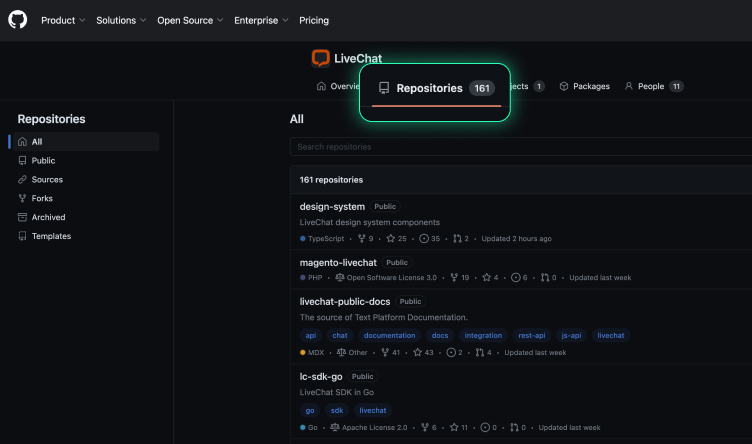
A GitHub repository — also known as a GitHub repo — refers to the most basic element in GitHub.
The GitHub repo contains all your code.
A GitHub repository isn't the same thing as a project. Unfortunately, GitHub used to refer to repositories as projects, so some confusion still exists.
However, a GitHub repository simply refers to the primary store of all your code files. One project can contain many repos.
By using a git repository, developers can facilitate collaboration and manage code projects effectively.
Branching
Git development is called trunk-based development, referring to a "tree trunk."
The "main branch" of a repository refers to the primary code base — the definitive branch of a repository. Whenever developers want to add features or work extensively on a section of the code base, they create a new branch of the code to work independently on that code.
When they're ready to commit their changes, they merge the code back into the main branch.
Before merging, team members typically review the branched code to ensure it won't cause conflicts in the main repository.
GitHub's collaborative features, including version history, are comparable to those of Google Docs, which also allows users to track changes and maintain a master copy of work.
Forks
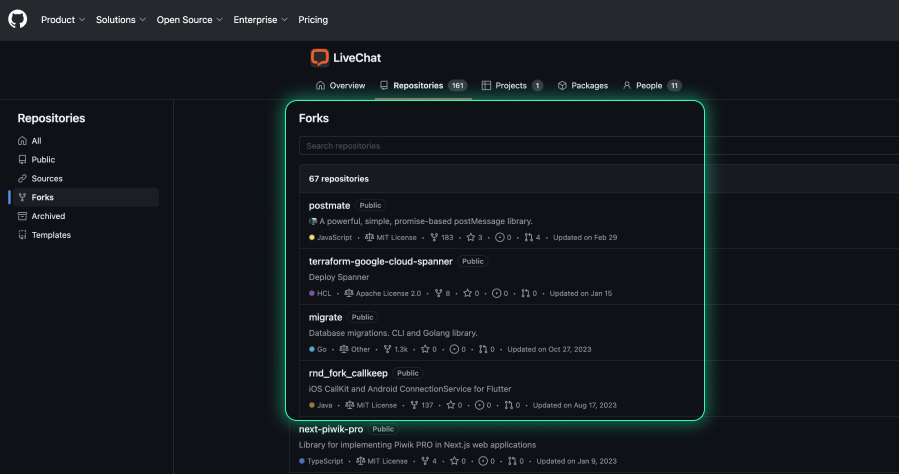
A fork is different from a branch in that it creates a completely separate copy of the repository, even though it originates from the same codebase.
You can think of a fork as a "copy" of the main repository that developers can modify independently without the intention of merging changes back into the original repository.
Collaborative teams typically use branches for new features. If someone forks code, they usually want to try to take the codebase in an entirely new direction.
That doesn't mean you can't merge any part of the forked code with the main repo.
Pull requests (PR)
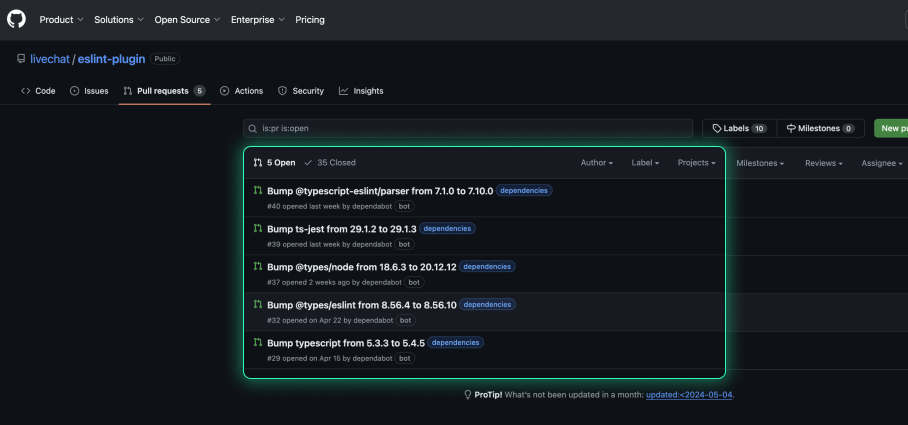
If you don't have direct write access to a repository, you must request code commits through a pull request.
Various ways exist to create a pull request, such as through the web interface, Visual Studio Code, or using the GitHub Command Line Interface (CLI).
A new pull request tells team members that you have code you want merged into the master branch — or a specific branch name. Authorized team members then review the code and approve or disapprove the pull request.
When merging code from a pull request, it's common to add a "commit message," which provides more detail about the different versions of the code. This way, people can easily understand the changes from previous versions compared to the pull request in question by simply looking at the message history.
Issues
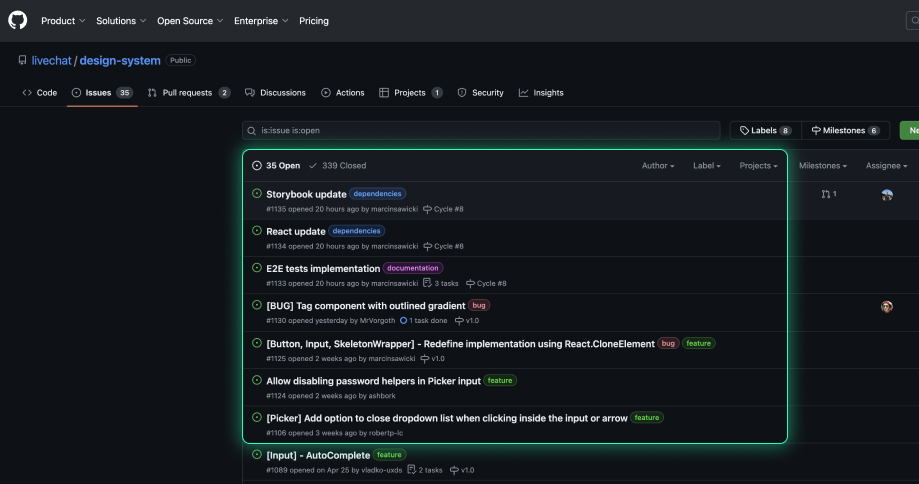
GitHub provides an Issues Tracking feature where GitHub users can submit issues about a project, thus making real-time collaboration easier. If someone sees a bug in the source code or wants a feature added to a project, they simply visit the project's page on GitHub, click the "New Issue" button, and then describe the issue or feature using the markdown editor. They can add images, links, and rich text to help GitHub developers understand the issue's scope.
When developers work on an issue, they can specifically reference that Issue Number in any code commits to easily track changes based on the issue.
GitHub Actions
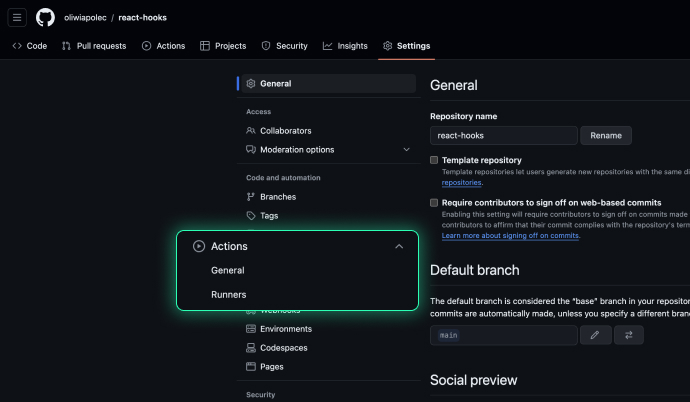
GitHub Actions is a powerful platform that integrates Continuous Integration and Continuous Delivery or Deployment (CI/CD) directly into a GitHub repository.
CI/CD is a modern way of developing software that automates integrating code changes into a shared repository, continuously delivering updates to production environments.
You configure GitHub action workflows based on repository events. Many events can trigger workflows, such as creating a repo, commenting on an issue, or updating a Wiki page. A full list of events is available here.
Once the event fires, your workflow begins, triggering actions you've defined in a configuration file.
Refer to this tutorial to understand how to use GitHub Actions in practice.
GitHub Pages

GitHub offers free hosting for static web pages, which means you don't have to maintain a separate website to describe your project.
The feature is called GitHub Pages. To create a GitHub page, just create a new repository and then initialize it with a README file, index.html file, or index.md file. GitHub looks for each of these files and displays it as the home page.
You can find full details about how to do this here.
Getting started with GitHub
Remember: The purpose of GitHub's interface is to make project management and collaboration with a global community easier. It's a "hub" based around the Git tool.
However, writing code itself is typically done on your local computer, in a copy of the hosted codebase.
Even though you can edit GitHub code files online, the code editor is limited compared to more robust Integrated Development Environments (IDEs) and code editors.
To get started, create a free GitHub account on the GitHub homepage.
Your GitHub profile is a great place to promote yourself as an open-source developer, and you can update it now or later.
To create a new repository, click the "New" button and give your repository a name.
(Remember: A new repository doesn't automatically equal a "new project," even though GitHub's documentation sometimes mixes this up.)
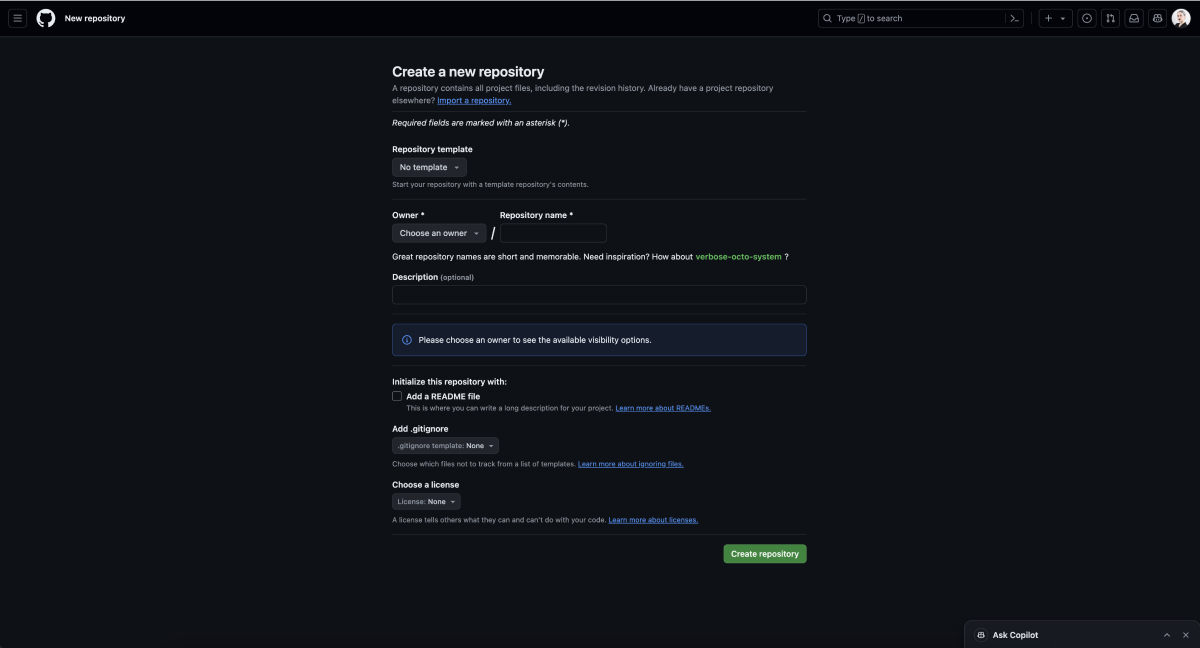
If you're using Linux or Mac, you probably already have Git installed. If you're on a Windows computer, the simplest way to install Git is via this download link.
Visual Studio Code is a great editor to use for GitHub, whether you're on Linux, Mac, or Windows. Once you've installed it, you can install the GitHub extension to make it easier to interact with your GitHub repository. Visual Studio Code integrates Git commands directly inside it, so you don't have to fiddle with the command line while learning the ropes.
And that's it. You're ready to start coding and collaborating!
Not only for developers — GitHub for enterprise and education
GitHub isn’t just for developers — it’s a platform that empowers businesses, educators, and students alike. With GitHub Enterprise, companies can access advanced tools for security, compliance, and seamless integrations like Cloudflare, making it a reliable choice for scaling teams.
For educators and students, GitHub Education offers resources like the Student Developer Pack, training modules, and free education bundles to support learning and innovation. Programs like GitHub Campus Experts also help students build leadership skills and organize community events.
Discovering GitHub’s hidden gems
Beyond its well-known features, GitHub offers powerful tools that many users, especially beginners, might not fully explore. Here's a quick overview of what we find the most valuable:
GitHub Codespaces
This feature provides cloud-based development environments that are pre-configured with the necessary tools for your project. With Codespaces, you can start coding almost immediately, as it eliminates the need for manual setup. It supports a range of configurations and integrates seamlessly with your repositories, making it especially useful for developers who work across multiple devices or need a consistent environment for collaboration.
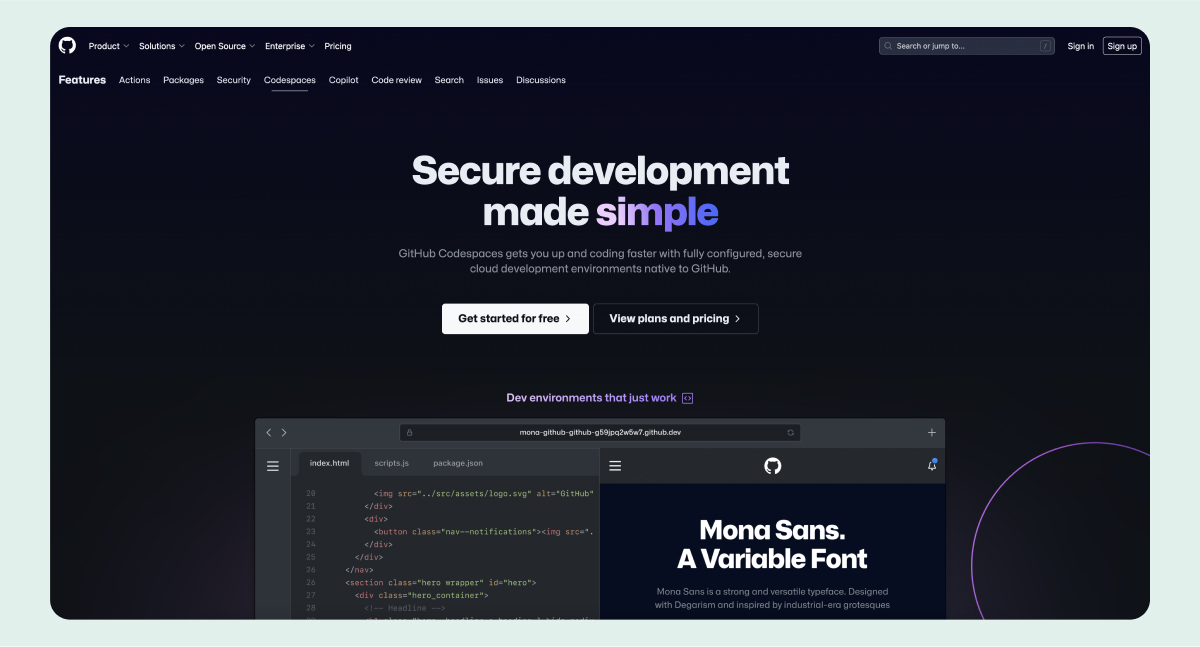
GitHub Discussions
This feature acts as a collaborative forum within your project, allowing teams and communities to share ideas, ask questions, and engage in brainstorming. Discussions are organized into categories and can be easily searched, making it a valuable resource for long-term knowledge sharing and decision-making.

GitHub Copilot
An AI-powered coding assistant that helps developers write code more efficiently. It analyzes the context of your work to suggest snippets, complete functions, and even recommend solutions for complex tasks. Copilot supports multiple programming languages and integrates directly into editors like Visual Studio Code, making it a versatile assistant for both simple and complex coding tasks.
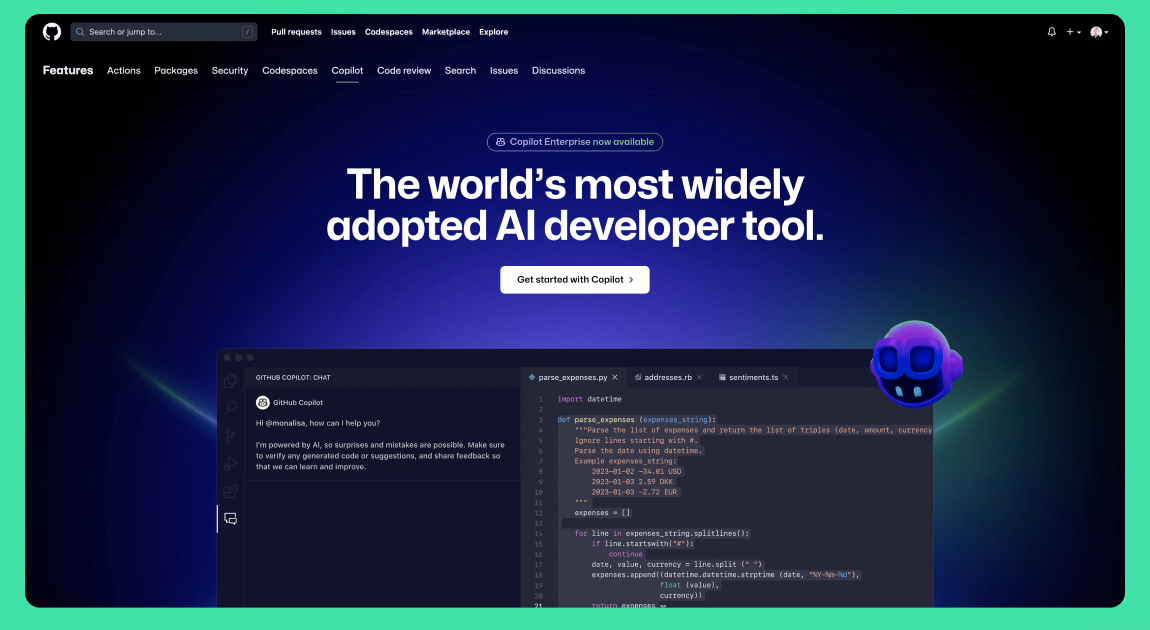
The similarities between GitHub and our Text Developer Platform
GitHub is an excellent place to find common-minded people who want to work on great software projects. In many ways, GitHub's ethos matches that of our Text Developer Platform, where we've empowered coders of all skill levels to build apps rapidly and then monetize them.
You can release Text Platform apps for free, just like open-source software on GitHub.
Software makes the world go round, and working on software projects as part of a community brings people together.
GitHub and our Text Developer Platform wonderfully co-exist, allowing your team to collaborate on external code on GitHub and then continue your collaboration on the Text Platform. Best of all, both platforms have a super easy learning curve.

We'd love to see you on the Text Platform. We have a rapidly growing community and an impressive suite of community-built apps. To get started, simply open a free account here. And if you're curious about what our team is doing on GitHub, check out the LiveChat GitHub profile here!
